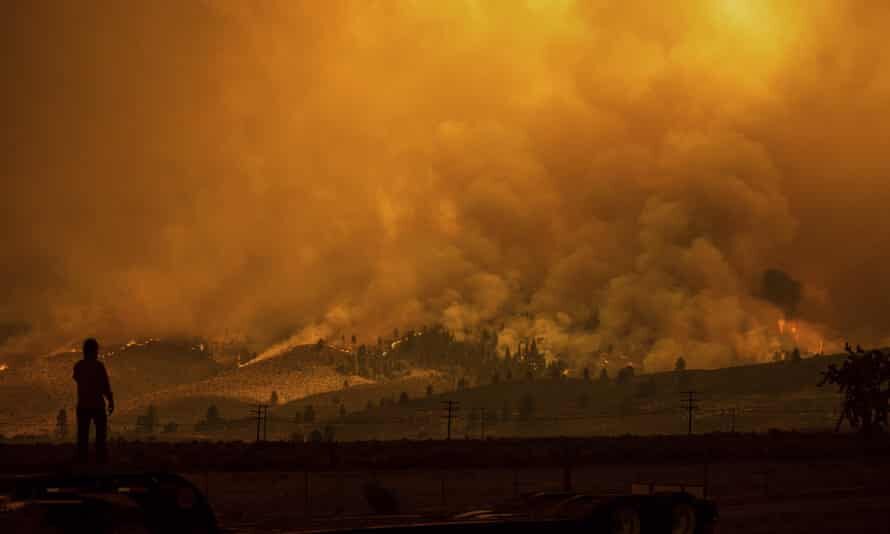
Nearly 60 wildfires tore through bone-dry timber and brush from Alaska to Wyoming, according to the National Interagency Fire Center. Arizona, Idaho and Montana accounted for more than half of the large active fires.
The fires erupted as the West was in the grip of the second bout of dangerously high temperatures in just a few weeks. A climate change-fueled megadrought also is contributing to conditions that make fires even more dangerous, scientists say.
The National Weather Service said the heat wave had peaked in many areas, and remaining excessive heat warnings were expected to expire by Tuesday night.
"While we are eagerly anticipating a cooling trend over the next few days, we still have another hot day to get through," the Medford, Oregon, weather office said.
The largest fire in the United States was burning in rural southwestern Oregon. The Bootleg Fire — which has ravaged about 316 square miles (818 square kilometers), an area more than twice the size of Portland — threatened some 2,000 homes, state fire officials said. It had burned about 21 homes homes as well as other minor structures, fire spokesman Daniel Omdal said Tuesday.
Firefighters were struggling to build containment lines and hadn't managed to surround any of the fire burning in the Fremont-Winema National Forest, near the Klamath County town of Sprague River.
"We are under extreme weather conditions. The humidity is low, the fuels are highly flammable and all those provide conditions for significant fire activity," Omdal said.
The fire disrupted service on three transmission lines providing up to 5,500 megawatts of electricity to California, and that state's power grid operator asked for voluntary power conservation Monday evening. The operator reported that more than 44,500 megawatts were available Tuesday.
In Northern California, a combined pair of lightning-ignited blazes dubbed the Beckwourth Complex was 26% surrounded after days of battling flames in windy, hot and dry weather that sapped moisture from vegetation. Evacuation orders were in place for more than 3,000 residents of remote northern areas and neighboring Nevada.
There were reports of burned homes, but damage was still being tallied. The blaze had scorched more than 145 square miles (375 square kilometers) of land, including in Plumas National Forest, and containment jumped to 46%.
A fire that began Sunday in the Sierra Nevada south of Yosemite National Park grew to nearly 15 square miles (39 square kilometers) but containment increased to 15%. Four unspecified buildings were destroyed.
Elsewhere, a forest fire started during lightning storms in southeast Washington grew to 86 square miles (223 square kilometers). It was 20% contained Monday.
Another fire west of Winthrop closed the scenic North Cascades Highway, the most northern route through the Cascade Range. The road provides access to North Cascades National Park and the Ross Lake National Recreation Area.
In Idaho, Gov. Brad Little mobilized the National Guard to help fight twin lightning-sparked fires that have together charred nearly 24 square miles (62 square kilometers) of dry timber in the remote, drought-stricken region.
Source: AP
AP journalist Julie Walker contributed to this report from New York.



Reader Comments
to our Newsletter